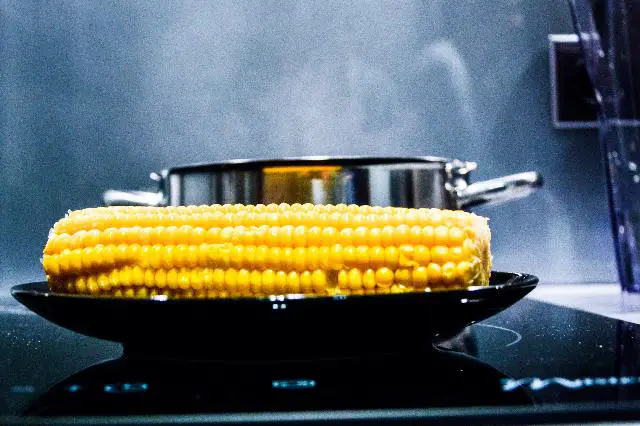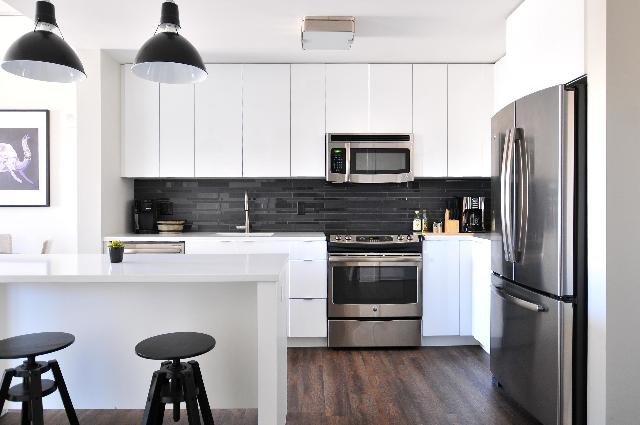Last Updated on August 8, 2023 By Emma W. Thomas
Yes, ceramic bowls are generally oven-safe. However, it’s important to check the manufacturer’s guidelines for specific temperature limits to avoid cracking. Gradual heating and cooling are recommended to prevent thermal shock. Always read care instructions for safe oven use.
What Happens When You Put Ceramics To Oven?

Since you have come to know the basics of ceramic bowls now you need to know a few things in detail too, so here they are:
1. Reaction To Thermal Heat/Shock
One of the essential things that you must bear in mind before you put away your ceramic bowls in an oven or microwave oven is that they are prone to expand in size under heat. If the bowl you are using is not heat resistant, then there is a possible chance that it will crack or break once you take your bowl out of the heat.
Even the bowls that claim to be oven-proof have a specific ability to withstand heat; though they can handle up to 3000 Fahrenheit still, there remains a chance that they might crack when taken off the heat. And once it gets broken, it ruins the look of your beautiful ceramic bowl, but it also makes it hard to clean and you can no longer keep food in it or use it to heat food.
Many of us might not know that the crack on the ceramic bowl becomes the home for many bacteria, which then causes a harmful reaction the moment you put food in it.
2. Look Out For The Proper Ceramic Bowls
If you are planning to buy a new set of ceramic bowls, make sure you go through the stuff you are looking for. If you search correctly, you will see that there are different kinds of bowls for further use.
There is a different kind of ceramic bowl for preparing the batter of cakes and another type for heating foods in the oven or microwave oven. You must keep in mind while buying ceramic bowls that do not compromise with the price; if required, they spend a little more than usual but try to purchase bowls from brands like Feldspar.
You will see that there are brands sold at lower prices and yet claim to be oven heatproof, but I would suggest not taking such risks instead and going for brands that are well known for their heatproof ceramic bowls.
3. Temperatures To Be Aware Of
Now, just because your ceramic cookware says that it is oven-proof, you can’t allow it to sit in the heat for hours. Despite being heatproof, there’s a certain amount of heat ceramic cookware can handle. If you allow your cookware to be at a temperature anywhere around 226 degrees Celsius (439 Fahrenheit) to 573 degrees Celsius (1063 Fahrenheit), then there’s a high chance that your ceramic cookware will develop cracks. So you cannot catch a break even when you are using ceramics that claim to be heatproof.

Do The Check Before you put Bowel into Oven
Though ceramics can withstand a certain amount, not all ceramics are heat-prone. So it is always advisable that before you put the bowl in the oven or microwave oven check the bottom for the warning that whether it is oven-proof or not, if it is oven safe then you can jolly well put it in the oven but if it is not then I would advise you not to put it in the oven. If you put the bowl in any way, then there’s a high chance that your favorite ceramic bowl will come out of the oven damaged!
There is one more thing that you could do if you are confused that whether the ceramic bowl set you brought or the set given by your granny is oven safe or not; if you see the mark of brands like Corningware or Pyrex, then be assured that they are oven-safe or if it is any other brands then all you can do is dig in some research and get to know that whether their materials are heatproof or not.
What to Look for When Purchasing Bowls for Ovens
When purchasing bowls for oven use, consider the following details:
- Material and Labeling: Choose bowls explicitly labeled as oven-safe. Materials like ceramic, stoneware, glass, and some metals are suitable. Look for indications of their maximum safe temperature.
- Temperature Limits: Check the recommended temperature range. Some bowls can withstand higher temperatures than others. Ensure it matches your intended oven use.
- Thermal Shock Resistance: Opt for bowls that can handle rapid temperature changes. Thermal shock-resistant materials prevent cracking when moving from extreme heat to cold.
- Gradual Heating: Even if labeled oven-safe, always preheat the oven gradually to minimize the risk of cracking. Place the bowl in the oven while it’s heating up.
- Shape and Size: Consider the shape and size of the bowl. Ensure it fits comfortably in your oven without touching the walls or other items. Choose a size suitable for your cooking needs.
- Handles and Edges: If the bowl has handles or edges, check if they are designed to be oven-safe. Some materials may not fare well under high heat.
- Lid Compatibility: If the bowl comes with a lid, ensure the lid is also oven-safe. Not all lids can withstand high temperatures.
- Cooking Methods: Different materials handle various cooking methods differently. For instance, glass bowls are great for baking and reheating but may not be ideal for broiling.
- Maintenance: Consider ease of cleaning. Some materials are more resistant to staining and are dishwasher-safe.
- Manufacturer’s Instructions: Always follow the manufacturer’s care instructions. They provide essential guidance on safe oven use, cleaning, and maintenance.
- Quality and Brand: Opt for reputable brands known for producing oven-safe kitchenware. Higher quality materials and manufacturing processes are likely to result in more reliable products.
- User Reviews: Read reviews from others who have used the bowls in the oven. Their experiences can provide valuable insights into the product’s actual performance.
Is There A Chance That Ceramics Burst In The Oven?
This is a FAQ (frequently asked question) by many. No, they do not burst or explode, but they get severely damaged and develop cracks. So, before you go ahead and put your ceramic cookware straight away in the oven, make sure that your ceramic cookware is at room temperature.
To sum up, you can use ceramic bowls in the oven only when they are ‘ovenproof’; otherwise, you would be taking a risk to ruin your cookware set! So if you keep the tips mentioned above in your mind, you are all good to go and can use the ceramic bowls without worrying whether they will crack up or not!
References:
https://nomliving.com/blogs/thingswedo/can-i-put-ceramic-plates-or-dishes-in-the-oven
https://www.hunker.com/13420304/how-to-tell-if-a-ceramic-bowl-is-ovenproof
Emma is a graduate of Domestic Science or Family and Consumer Sciences (Home Economics) from the University of Wisconsin. She has 7 years of experience Working with the strategic section of BestBuy and now writing full-time for Homeeon.
From Managing the Home, Interiors, Cleaning, and Exteriors to Gardening and everything about Making A Home Liveable – is her passion and this Homeeon is the result of this.
Emma loves decorating her home with the best stuff found online. She cares about quality over anything and writes reviews about them here in Homeeon. Get in touch with her over Pinterest.
Keep reading her blogs.
